TREES > AMELANCHIER
Chris is a gardening writer and nature enthusiast. He graduated from Oxford Brookes University in 2022 with an MA in Psychology. Chris works with the Leeds Green Action Society, helping their food cooperative by growing various fruit and vegetables on their two allotments in Hyde Park, Leeds.
Reviewed By COLIN SKELLY

Colin is a Horticulturist and Horticultural Consultant with experience in a range of practical and managerial roles across heritage, commercial and public horticulture. He holds the Royal Horticultural Society’s Master of Horticulture award and has a particular interest in horticultural ecology and naturalistic planting for habitat and climate resilience.
Contributions From KATHERINE CROUCH

Katherine Crouch is an award-winning Garden Designer who won the BBC Gardener of the Decade in 2008. Other accolades include a Gold Medal at the RHS Chelsea Flower Show in 2013 and BBC Gardener of the Year in 1999. Katherine still runs her garden design service and also offers talks and consultations at various gardening clubs, online and in person.
AMELANCHIER GUIDES
While originally hailing from the US, this tree has settled nicely into the UK and makes a great addition to any garden, whether you plant it yourself and watch it grow over the years or you move into a place where a thoughtful previous resident did the waiting for you.1Amelanchier × lamarckii. (n.d.). Kew Royal Botanic Gardens. Retrieved April 11, 2023, from https://powo.science.kew.org/taxon/urn:lsid:ipni.org:names:721221-1
This tree is beautifully colourful, with a clean white blossom giving way to rich green leaves that then fade out through a pleasing autumn palette.
Purple-pink berries join the medley of colour in summer and these, called juneberries or serviceberries, are edible!2Wong, J. (2018, August 2). Juneberry, the blossom with benefits. The Guardian. Retrieved March 9, 2023, from https://www.theguardian.com/lifeandstyle/2017/mar/26/juneberry-the-blossom-with-benefits
Overview
| Botanical Name | Amelanchier lamarckii |
| Common Name(s) | Snowy Mespilus / Juneberry |
| Plant Type | Perennial |
| Native Area | Canada |
| Hardiness Rating | H7 |
| Foliage | Deciduous |
| Flowers | White blossom |
| When To Plant | October to November |
| When To Prune | March |
Sunlight
Preferred
Full Sun or Partial Shade
Exposure
Exposed or Sheltered
Size
Height
Up to 12M
Spread
Up to 8M
Bloom Time
Spring / Summer / Autumn
Soil
Preferred
Clay, loam or sand
Moisture
Moist but well-drained
pH
Acidic to neutral
When you see this tree in spring bloom it’s easy to see where the common name Snowy Mespilus comes from, as the white flowers are really a sight to behold.
Amelanchier lamarckii has been awarded the Award of Garden Merit (AGM), meaning it’s particularly well suited to growing in British conditions.
This makes it a fine candidate for anyone looking for a tree in their garden.
“If you want a tree in your garden (which you should do), consider small-leaved ones like Amelanchier,” shares garden designer Katherine Crouch.
“In the autumn gales, with any luck, the leaves will all blow next door or curl up under a hedge, meaning no masses of leaves to rake!”
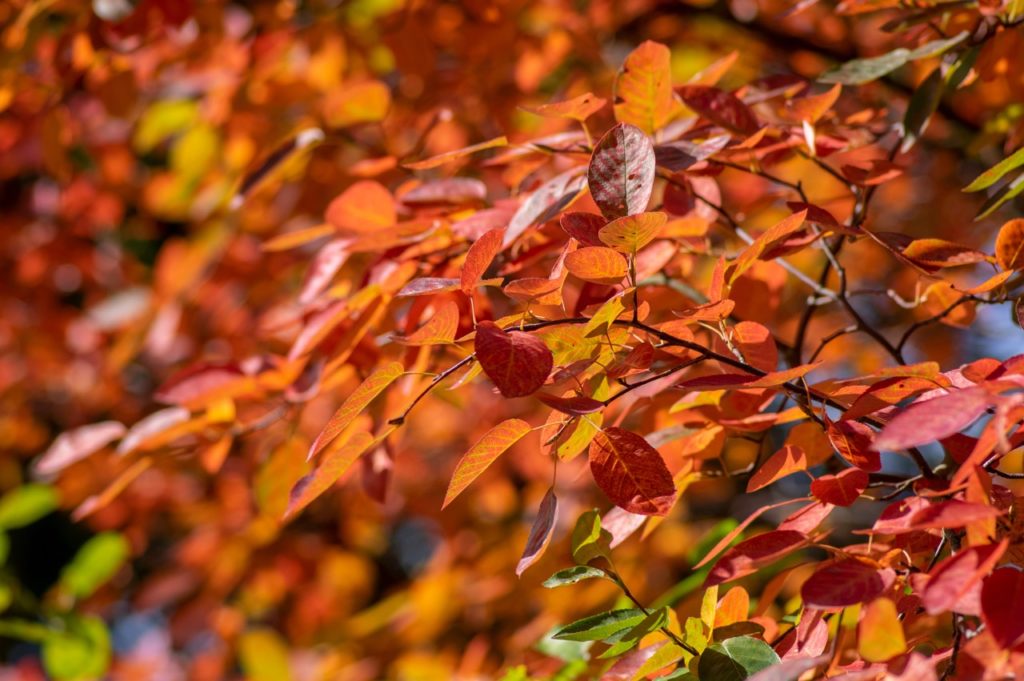
Canadian heritage means this tree can handle very low temperatures and it’s rare that we see cold anywhere close to those extremes!
It’s noted for its ability to attract bees and other pollinators too, great if you’re looking for a little buzz.
You can grow A. lamarckii in the ground or in a container and it can also be grown as a tree, a shrub or a hedge.
This versatility makes it a popular choice for a range of gardeners.
Planting Amelanchier
Clay or loam soil is favourite for A. lamarckii, as well as a spot with plenty of space to allow the tree room to thrive.
If you’re growing A. lamarckii from seed, grow in a cold frame in late summer and plant out the following spring.
If you’ve bought a plant in a container, you can plant it out at any time, although October or November is preferable.
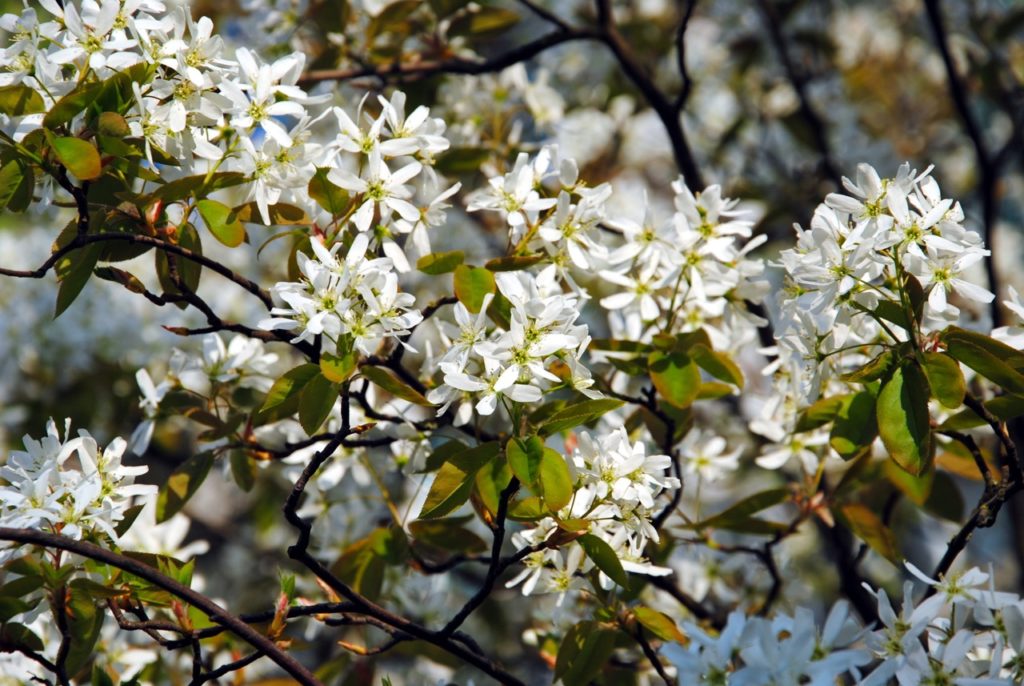
If you decide to plant out from a container in spring be extra vigilant, taking care to water your Amelanchier frequently to help it get established.
Find a spot with full sun or partial shade, with moist soil and good drainage.
Choosing a spot with good amounts of sunshine will lead to a more vibrant autumnal colour palette.
How To Plant
To plant out an Amelanchier bought in a container, dig a hole of suitable size in the ground and lift it in, taking care to pack the soil around the roots tight enough that the young tree can stand up on its own firmly.
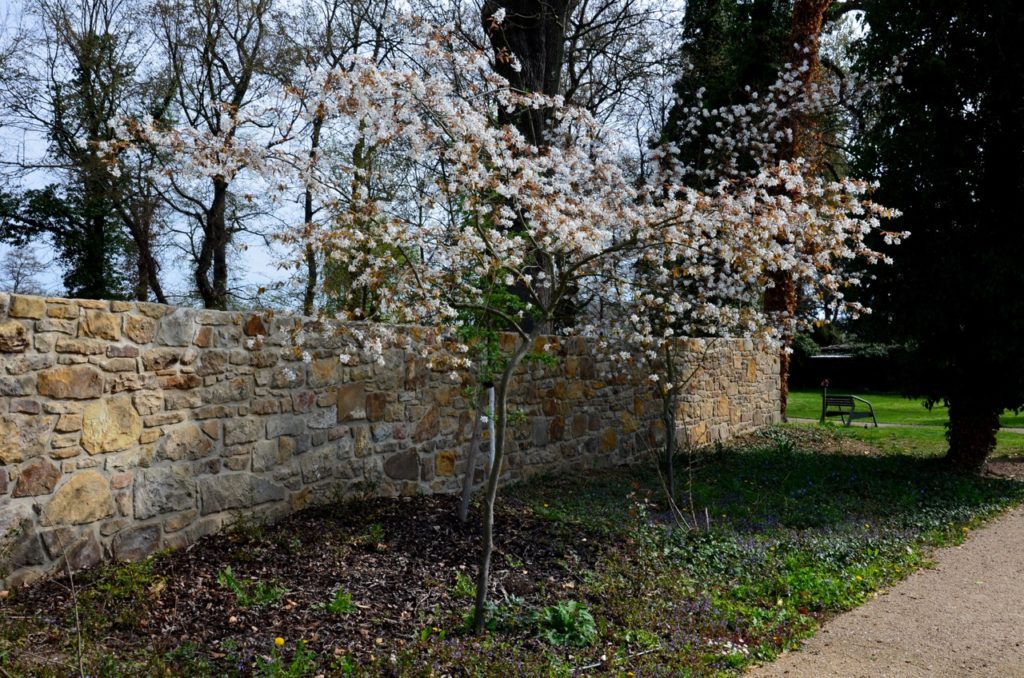
The top level of the soil should be level with the rest of the bed, and you should water right away.
Juneberry Plant Care
Whether you’ve got an A. lamarckii plant already or you’re planning to get one, learning how to take care of it will help it to thrive long into its life.
Preferred Soil & Fertilising
Clay or loam is favoured by this plant, with good drainage as another important feature.
This said though, they’ll do well in other types of soil too, just make sure to avoid soil with lime as this tree prefers acidic to neutral pH levels.
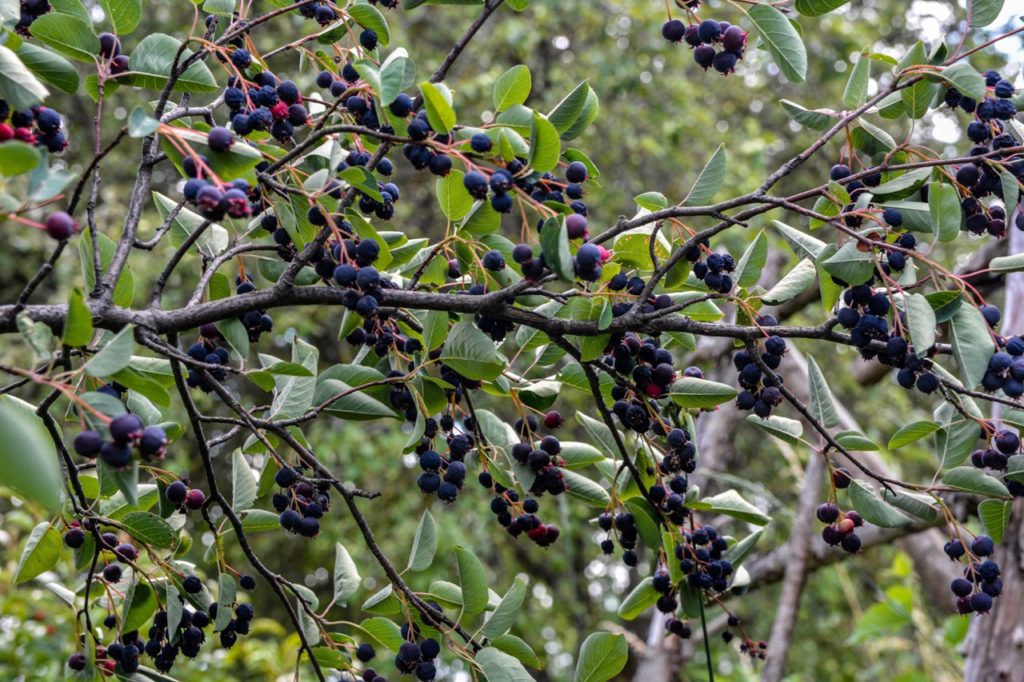
This tree likes well-drained soil as we’ve said; areas that are left soggy will most likely damage the roots and stunt growth, potentially even killing the tree if the issue is not rectified.
They will tolerate drought conditions for a length of time, but you should still take care to water as and when they need to keep them healthy.
Watering
With a newly-planted tree, water a couple of times a week to help it get established.
After a year or so, when your juneberry is established, you won’t need to water it anymore except during the most severe drought conditions.
Deliberate watering is mainly good for nurturing the plant through its fledgling years.
Staking
It’s okay to stake young A. lamarckii trees, but remember not to tie the stakes too tight.
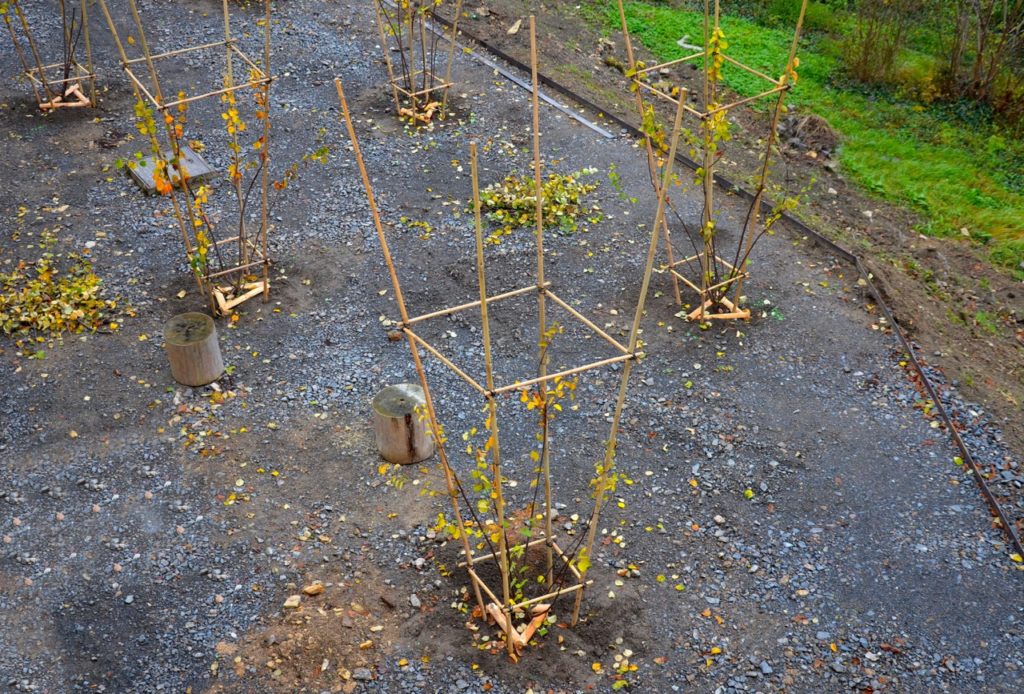
Your tree still needs to be able to sway in the wind as this helps to establish and strengthen the root system that will keep it anchored in the future.
Also, remember to remove your stakes after a couple of years, as a stake left on for too long can cause damage to the trunk of your tree and stunt future growth.
Common Problems
Thankfully, this tree is fairly resistant to pests and other problems.
The thing to keep an eye out for is fireblight, which is a bacterial infection that leads to damage that looks like it may have been caused by fire – hence the name.
If you see any of the following symptoms, your juneberry may be infected:
- Wilting or dying blossoms.
- Slimy white liquid in wet weather.
- Shoots shrivelling and dying.
- Fox colouration beneath bark.
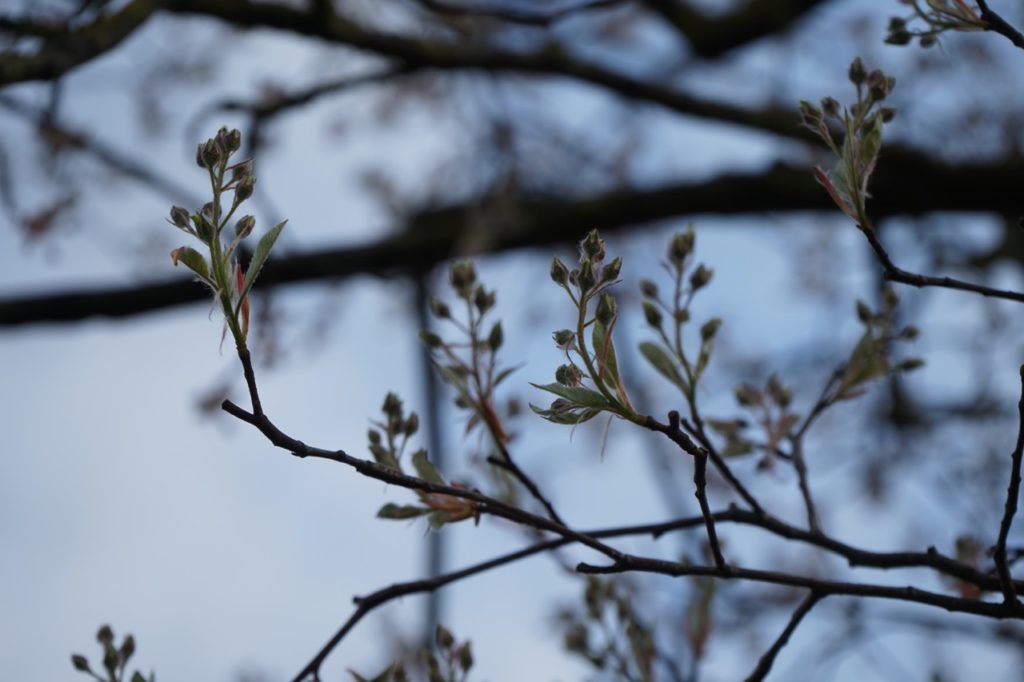
The way to control fireblight is the immediate removal and destruction of the infected areas.
Obviously, if the infection spreads to the main trunk this can be difficult to achieve.
Pruning
This tree has a tendency to arrive at well-organised branch structures of its own accord and requires little pruning as a result.
“I am a huge fan of multi-stemmed Amelanchier lamarckii for small gardens, as there is something for every season,” shares Colin Skelly, a Master Horticulturist with years of experience, including 5 years working at The Eden Project.

“You can prune out the oldest stems to keep the size of the tree limited, which also limits the shade underneath and increases the planting opportunities.
“You can also fully rejuvenate the tree by pruning out 1/3 of the oldest branches every year for 3 years.”
If you do decide to prune away areas, do so in late winter or early spring.
Companion Planting
This plant looks great with tulips around its base, or against the bright red colouration of cornus alba.
FAQs
How Tall Does Amelanchier Lamarckii Usually Grow?
It depends.

In the ground, this tree can grow to a height of around 12m over a 10-20 year span.
When grown in containers, it will reach a much smaller maximum height.
Can You Keep The Tree Small?
Yes: growing your juneberry in a container will keep its maximum size down.
How Fast Does Amelanchier Grow?
You should expect about 30-40cm of growth each year in ideal conditions.
References
- 1Amelanchier × lamarckii. (n.d.). Kew Royal Botanic Gardens. Retrieved April 11, 2023, from https://powo.science.kew.org/taxon/urn:lsid:ipni.org:names:721221-1
- 2Wong, J. (2018, August 2). Juneberry, the blossom with benefits. The Guardian. Retrieved March 9, 2023, from https://www.theguardian.com/lifeandstyle/2017/mar/26/juneberry-the-blossom-with-benefits

